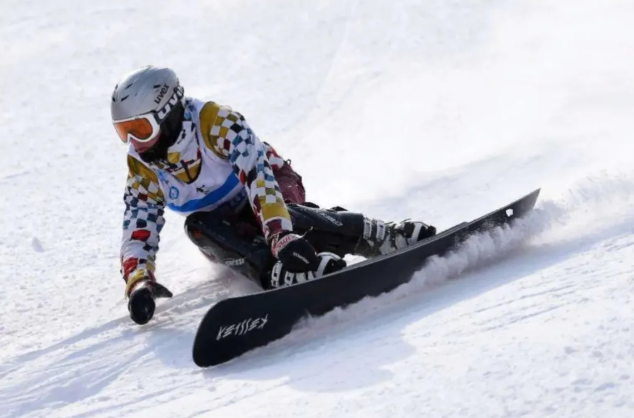
The basic structure of a snowboard:
1. Board body: the main part of the snowboard, usually in the shape of a long strip, with slightly upturned ends at the front and back.
2. Side edges: located on both sides of the snowboard, used to grab the snow surface, provide stability and steering control.
3. Bottom surface: the side that contacts the snow surface, usually coated with special materials to provide friction.
4. Wear surface: usually located above the bottom surface, used to protect the bottom surface, and can be repaired and ground more conveniently.
5. Shoe interface: used to connect the skier’s shoes and snowboard.
Snowboard terminology analysis:
1. Flex: refers to the degree of bending of the snowboard, which is usually divided into three types: soft, medium and hard. Soft boards are suitable for beginners and light skiers, medium boards are suitable for intermediate skiers, and hard boards are suitable for advanced skiers and competitive athletes.
2. Camber: refers to the arc of the snowboard when it is not loaded. When the skier stands on the snowboard, the board body will bend, generating rebound force, improving rebound speed and acceleration performance.
3. Rocker: In contrast to Camber, it refers to the degree to which the ends of the ski are tilted upward. The larger the Rocker, the easier it is for the ski to turn, but the less stable it is at high speeds.
4. Sidecut: refers to the side edge curve of the ski. Different sidecuts are suitable for different types of skiing venues and snow conditions.
5. Waist Width: refers to the width of the middle part of the ski, which affects the skier’s foot spacing selection and steering control.
Ski performance indicators:
According to the GB/T40931-2021 standard, skis should meet the following performance indicators:
1. Bending strength: Skis should have sufficient bending strength under normal use.
2. Wear performance: The material on the bottom of the ski should have sufficient wear resistance.
3. Side sliding performance: The side edge can provide stability and steering control, so it should have sufficient side sliding performance.
4. Rebound performance: The ski should have sufficient rebound force after compression to improve acceleration performance.
Post time: Dec-26-2024





